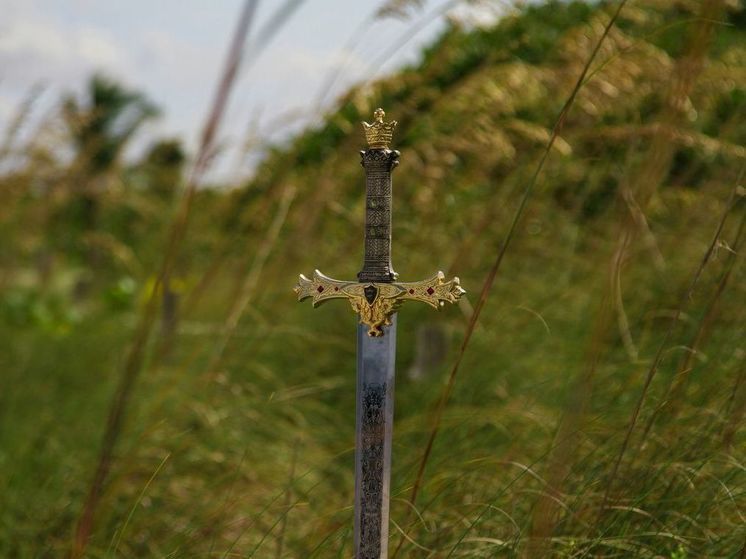Scientists quibble over the ancient legend
The ambitious search for Excalibur is in full swing as divers explore British lakes in search of the “magic sword” thrown into the water by King Arthur. It is believed that the legendary blade was thrown into the water by an ancient king in the 6th century.

The mythical sword Excalibur (aka Excalibur) must be one of the most famous objects in history, writes the Daily Mail. Belonging to King Arthur, the legendary British ruler of the 5th and 6th centuries, it was endowed with "magical" the power that made him such a formidable warrior.
According to legend, the sword was thrown into a lake by King Arthur as he lay dying after his final battle somewhere in Britain.
Experts are now carrying out an ambitious effort to locate the object in British waters, and they are not deterred by the possibility that that the sword doesn't even exist.
They say they have identified several possible locations for Excalibur and are trying to find it for a new TV series called Weird Britain. A team of filmmakers, magnet hunters, technical experts, archaeologists and divers are on a new quest to find Excalibur.
The first part of the project began at an undisclosed location in Cornwall last year, but there are still more British waterways to be explored.
“No one has ever beaten us and no one has as much equipment as we do,” said Nigel Lamford, head of Northants Magnet Fishing, which is involved in the project. – If there is something inside and it is magnetic, it will float.»
Experts believe there are several possible locations in Britain where Excalibur could be located. In Cornwall, this could be Dosmary Pool, on the edge of Bodmin Moor, or near Alderley Edge in Cheshire.
The team hopes the project will either further cement the sword's mythical status or provide some big surprises.< /p>
«There is a lot of controversy about the location of the lake mentioned in the Arthurian legends,» said Tim Whittard, producer of the series «Weird Britain.»
"Identification of the lake in question – it's a mystery that has had historians and researchers arguing for centuries about whether the lake still exists and whether the legend is even true.»
To search, experts use underwater drones and remotely operated vehicles (ROVs) – unmanned vehicles that are controlled by personnel from afar.
The drones are either tethered or not tethered to a larger surface vessel and controlled using a joystick, much like a game console controller.
“This is the first time we've had the opportunity to use underwater drones or submersible ROVs with professional magnet fishers on this type of expedition,” says Tim Whittard. – I think this is a really innovative and fun use of drone technology that will make for great television.»
As legend has it, the sword appeared on a magical lake, where the Lady of the Lake, a character in the Arthurian legend, gave it to the king. Later, as the king lay mortally wounded after his last battle, he ordered the faithful Sir Bedivere to go to the water and throw his sword into it. A hand rose to catch it, swung Excalibur three times, and then disappeared.
Supposedly, this took place on the mythical island of Avalon, which is associated with modern-day Glastonbury in Somerset. Arthur was taken to Avalon to recover from his last battle, the Battle of Camlann, which may have taken place in Cornwall, near Hadrian's Wall in Northern England, or even in Wales.
In a Welsh document dating from , probably from the mid-10th century, under the title «Cumbrian Annals», gives the date of Arthur's death at Camlann in 537-59 AD.
Excalibur – it is also the name given to the sword in the stone intended for Arthur as proof of his birthright and royalty, – story that inspired the 1963 Disney film — but many sources insist they were two different swords.
"There are several versions of this legend that muddy the waters, so to speak, but the legend persists after many centuries, so there may well be some truth to it, Nigel Lamford told MailOnline. “So, right now we are looking for a sword or anything that could be part of a sword, and if something like that is found, then the task of historians, archaeologists and scientists from laboratories is to determine what exactly we found.”


















































Свежие комментарии